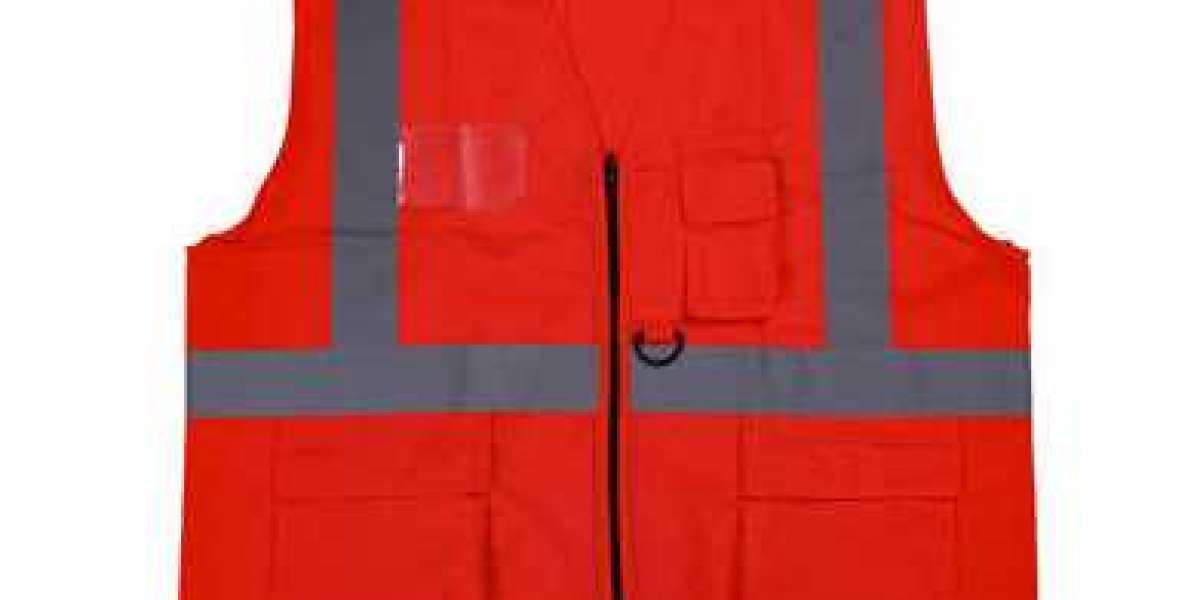Here are some key ways in which safety vests protect workers:
Enhanced Visibility: Safety vests are typically made from bright, high-visibility colors such as fluorescent yellow or orange. They also feature retroreflective materials, such as reflective stripes, that reflect light back to its source. These features make workers more visible, especially in low-light conditions or areas with heavy machinery or moving vehicles. Increased visibility helps prevent accidents by ensuring that workers are easily seen by their colleagues and equipment operators.
Alerting Others: Safety vests serve as a visual signal to others that the wearer is in a hazardous work area. This helps alert coworkers, vehicle operators, and other personnel to exercise caution and be mindful of their surroundings, reducing the likelihood of accidents or collisions.
Identification and Differentiation: Safety vests often include features like reflective badges, ID cards, or customized markings that allow workers to identify and differentiate themselves. This is particularly important in environments with multiple employees or contractors, ensuring that workers can be easily recognized and accounted for.
Compliance with Regulations: Safety vests are often a requirement in hazardous workplaces to comply with safety regulations and standards. Employers have a responsibility to provide a safe work environment, and in many cases, this includes the use of safety vests as a mandatory personal protective equipment (PPE).
Protection Against Hazards: Safety vests can be designed to provide protection against specific hazards in the work environment. For example, some vests are made from flame-resistant materials to protect workers in environments with a risk of fire or sparks. Others may have additional reflective elements, glow-in-the-dark features, or LED lights to enhance visibility during emergencies or in areas with poor lighting conditions.
Personal Protective Equipment Integration:
Safety vest manufacturers can integrate with other personal protective equipment (PPE) to provide a comprehensive safety solution. For instance, they may have pockets or compartments to hold items such as safety glasses, ear protection, gloves, or communication devices. This ensures that essential safety gear is easily accessible and reduces the chance of items being misplaced or lost during work.
Psychological Safety: Safety vests contribute to the psychological safety of workers by providing a sense of security and assurance. Knowing that they are easily identifiable and protected by their safety gear can help reduce stress and anxiety, allowing workers to focus on their tasks and maintain situational awareness.
In summary, safety vests play a vital role in protecting workers in hazardous environments. By enhancing visibility, alerting others to their presence, aiding identification, ensuring compliance with regulations, offering protection against specific hazards, integrating with other PPE, and promoting psychological safety, safety vests help prevent accidents and create a safer work environment.
 Сделайте следующий шаг в своей образовательной карьере: Купить диплом и достичь новых высот
By worksale
Сделайте следующий шаг в своей образовательной карьере: Купить диплом и достичь новых высот
By worksale Диплом по вашему выбору: легко и надежно купить онлайн
By worksale
Диплом по вашему выбору: легко и надежно купить онлайн
By worksale Купить диплом с бесплатной доставкой
By worksale
Купить диплом с бесплатной доставкой
By worksale Преодолейте преграды в карьере: Купить диплом – ваш путь к успеху
By worksale
Преодолейте преграды в карьере: Купить диплом – ваш путь к успеху
By worksale Torrent Mp3 Temper Trap Sweet Disposition Mp3 5.38 MB - Mp3 Pc Cracked Exe Full Version
By berrololof
Torrent Mp3 Temper Trap Sweet Disposition Mp3 5.38 MB - Mp3 Pc Cracked Exe Full Version
By berrololof


